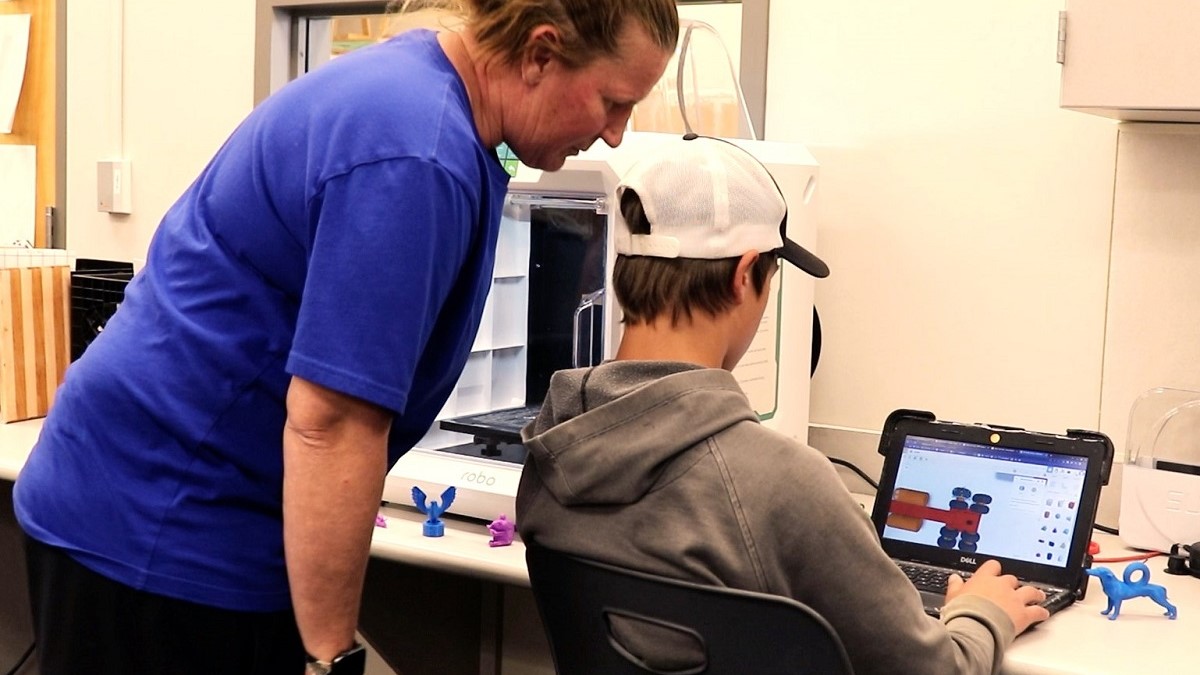
High schools and vocational institutions are at the forefront of shaping students for the challenges of an increasingly dynamic workforce. The integration of robotics, 3D printing, and interactive displays is no longer just convenient—it's essential. This transforms how students acquire vital life skills and prepares them for a competitive job market.
A Tech-Infused Future
The educational landscape has undergone a seismic shift, moving away from traditional methods to embrace technology as an integral part of the learning process. High schools and vocational schools are recognizing the need to bridge the gap between theoretical knowledge and practical skills, preparing students not only for higher education but also for the workplace.
Interactive Learning Redefined
The integration of robotics and interactive displays has revolutionized the classroom experience. These technologies engage students in ways traditional methods cannot, fostering a dynamic and appealing learning environment. Picture a vocational school where students use robotics to simulate real-world scenarios in fields like automotive repair or healthcare. The interactive nature of these simulations enhances not only technical skills but also problem-solving abilities and adaptability, crucial for success in any profession.
Interactive flat panel displays and virtual learning platforms provide an immersive experience, allowing students to visualize concepts in 3D and collaborate on projects. The use of interactive technology transforms classrooms into dynamic hubs of creativity and engagement.
Strengthening 21st Century Soft Skills
In addition to technical proficiency, the workplace demands a set of soft skills, often referred to as "21st-century skills." These include critical thinking, communication, collaboration, and creativity. The integration of robotics and 3D printing serves as a catalyst in developing these skills by fostering interactive and collaborative learning environments.
For instance, collaborative robotics projects facilitated through online platforms allow high school and vocational students to work together, irrespective of physical boundaries. Whether it's programming a robot to perform specific tasks or designing a prototype using a 3D printer, students learn to communicate effectively, share ideas, and appreciate diverse perspectives—skills essential for thriving in a globalized workforce.
Bridging the Gap Between School and Industry
One of the primary goals of vocational education is to prepare students for specific careers. Robotics and 3D printing act as a bridge between the classroom and the industry by providing students with insights into real-world practices. Industry-specific software, virtual labs, and simulations enable students to familiarize themselves with the tools and processes used in their chosen fields.
For example, a vocational school focusing on manufacturing could leverage 3D printing technology to create prototypes of products. Students can witness the entire production process, from design to the finished product, providing them with practical insights and skills that directly translate to the workplace.
Personalized Learning for Diverse Learners
Every student is unique, with individual learning styles, preferences, and paces. Robotics and 3D printing facilitate personalized learning experiences, allowing educators to tailor instruction to meet the diverse needs of their students. Adaptive robotics programs, AI-driven assessments, and educational apps empower students to progress at their own speed, reinforcing their understanding of concepts before moving forward.
In a high school setting, this means that students can explore their interests more deeply. Whether it's programming a robot to execute specific tasks or using a 3D printer to bring their design ideas to life, technology provides avenues for students to express their creativity and highlight their understanding of subjects.
Professional Development for Educators
The integration of robotics and 3D printing is not just focused on students but extends to educators too. Platforms offering webinars, virtual workshops, and collaborative networks enable educators to stay abreast of the latest educational technologies and pedagogical practices.
By investing in the professional development of teachers, districts empower their educators to create interactive and engaging learning environments. This, in turn, directly benefits students, who receive instruction that is not only informative but also reflective of the digital age in which they live.
Overcoming Challenges Through Innovation
While the benefits of technology in education are immense, it's crucial to acknowledge the challenges that may arise. Issues such as the digital divide, access to devices, and the need for cybersecurity measures are important considerations. District administrators play a pivotal role in addressing these challenges by fostering innovation, seeking inclusive solutions, and ensuring that technology is a tool for equity rather than a source of division.
Shaping Future Leaders
The transformative role of robotics, 3D printing, and interactive displays in high schools and vocational education goes beyond preparing students for specific careers—it shapes them into adaptable, critical-thinking individuals ready to face the challenges of the future. The interactive and dynamic nature of tech-infused learning experiences not only enhances technical proficiency but also cultivates essential life skills.
Education decision-makers should make efforts now to prioritize innovative programs that seamlessly incorporate robotics, 3D printing, and interactive displays. Highlight essential skills—creativity, collaboration, adaptability—for future-ready students. Drive initiatives bridging theory and practice, preparing learners for the dynamic educational landscape. Advocate substantial investments in ongoing professional development, ensuring educators adeptly navigate the digital age. Champion transformative approaches actively shaping leaders equipped for tomorrow's challenges. It's time to pave the way for an education system that prepares students and educators for the demands of the future.
Read a recent school success story: Weld County School District
Explore award-winning technology solutions that support 21st century skills. Go to www.boxlight.com.


